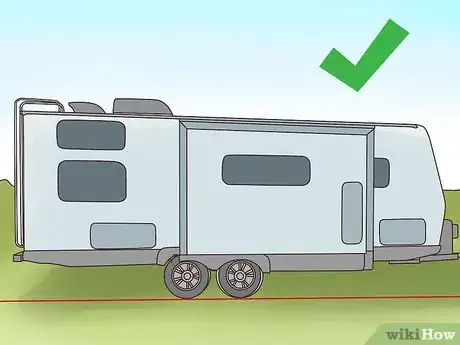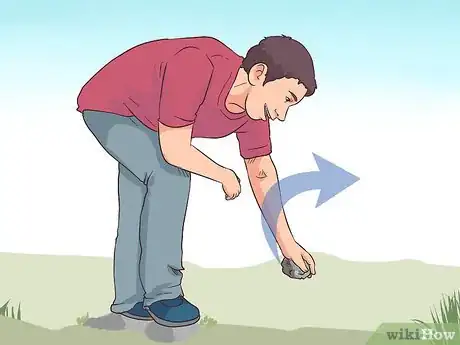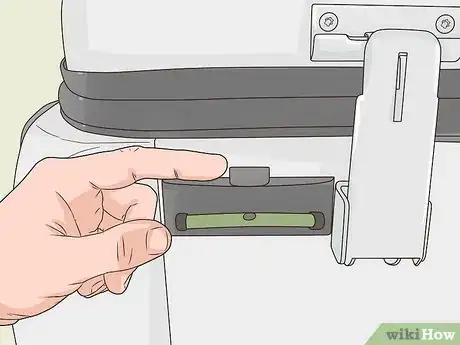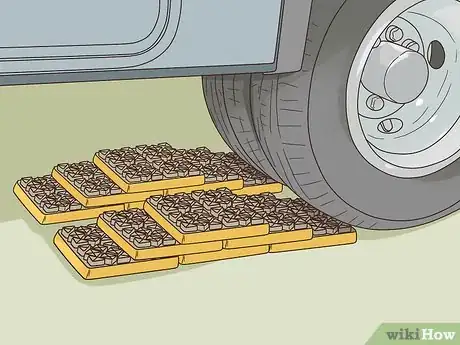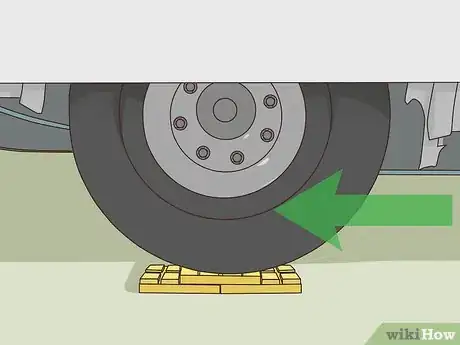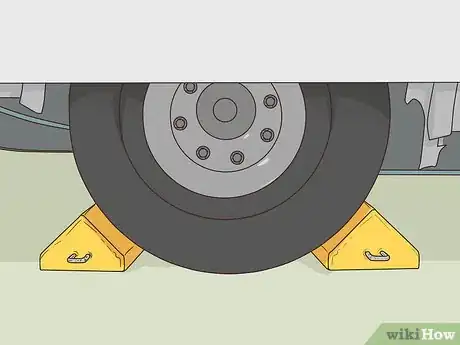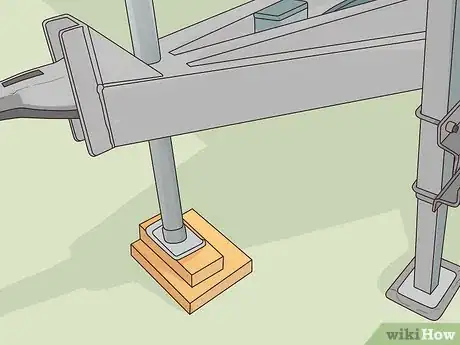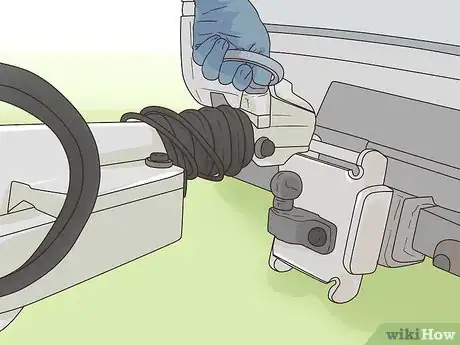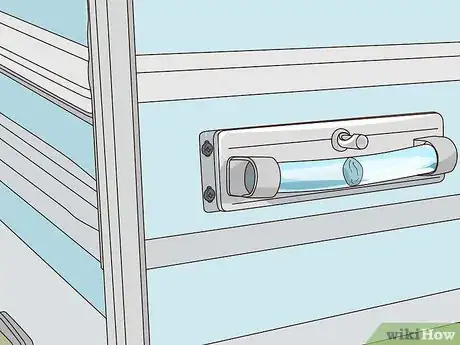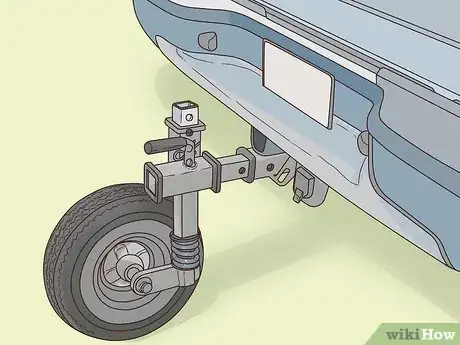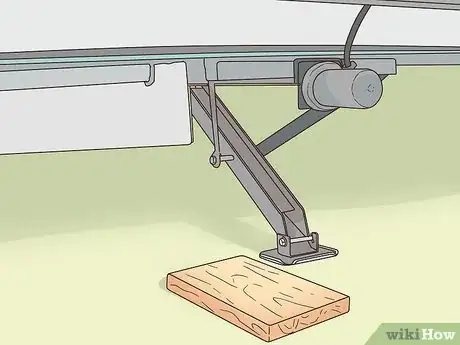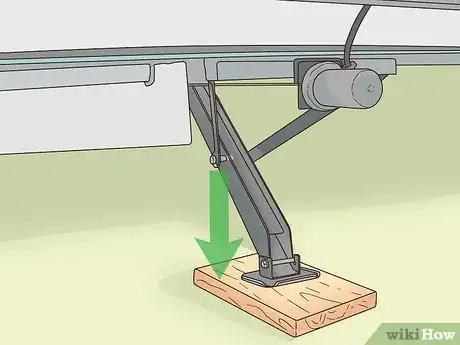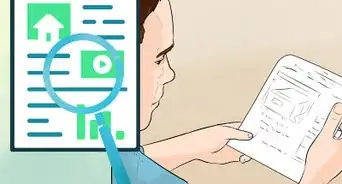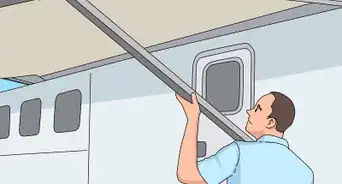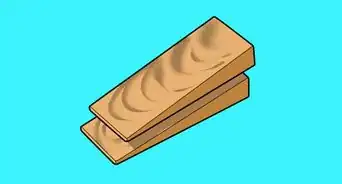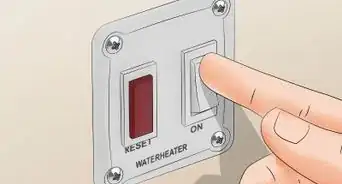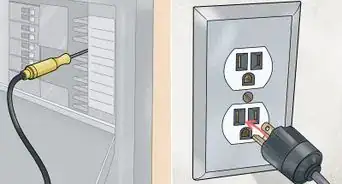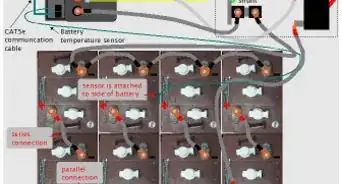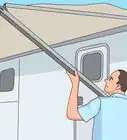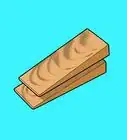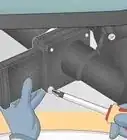This article was co-authored by wikiHow Staff. Our trained team of editors and researchers validate articles for accuracy and comprehensiveness. wikiHow's Content Management Team carefully monitors the work from our editorial staff to ensure that each article is backed by trusted research and meets our high quality standards.
wikiHow marks an article as reader-approved once it receives enough positive feedback. In this case, 92% of readers who voted found the article helpful, earning it our reader-approved status.
This article has been viewed 70,489 times.
Learn more...
Leveling makes your camper more comfortable to stay in and helps features like gas refrigerators function properly. It's done with a level and some plastic leveling blocks or wood scraps. After leveling the camper from side to side, level it from front to back by adjusting the tongue jack. Take the time to do this and you'll keep your camper safe and stable.
Steps
Leveling from Side to Side
-
1Pick a flat place to park. Try to find a parking spot that is as flat as possible. Leveling is meant to compensate for minor ground unevenness, so parking on a slope will still be uncomfortable and unsafe.[1]
- If the ground slopes to the camper’s side, reposition the camper so the ground slopes towards the front or back end.
-
2Clear out the area before leveling the camper. Make sure there aren’t any rocks, big branches, or camping items nearby, since these can get in the way. Afterwards, ask everyone to move away from the camper while you work.[2]Advertisement
-
3Use a level to measure the camper from side to side. Bring along an inexpensive level, such as a surface or bubble level. Lay the level from left to right in the camper’s doorway. The side of the level that is lower is the side of the camper you’ll need to raise.
- Keep the camper hitched until you’re done leveling it from side to side.
-
4Place leveling blocks near the tires. Leveling blocks are like strong, plastic Lego blocks for campers. Snap them together to form a ramp for the camper. Place them in front of the tire you need to raise. These blocks can be purchased at general stores like Walmart as well as camper stores.[3]
- A cheaper leveling option is 2 in × 10 in (5.1 cm × 25.4 cm) pieces of lumber. The wood always has to be wider than the tires. Also, wood can take up a lot of storage space and, if the wood is rotten or broken, it shouldn’t be used.
-
5Drive the camper onto the blocks. Slowly drive the camper forward onto the leveling blocks. If you’re having trouble, ask someone to guide you. The wheels should be firmly on the blocks. Measure the camper’s levelness again and make adjustments as needed.
- If it feels easier for you, place the leveling blocks behind the wheels and back onto them instead.
- If part of the tire hangs off the leveling block or wood scrap, the tires will weaken over time. Readjust the camper to avoid this.
-
6Place wheel chocks under the tires to hold the camper still. Chocks are a safety measure, so use them even when you think you don't need them. Place the chocks under the wheel, wedging them in place by hand. Place them behind the wheels if the ground slopes towards the rear end of the camper.[4]
- Wheel chocks can be found at general stores and camping supply stores. If you don’t have any, wood scraps can be used instead.
Leveling from Front to Back and Stabilizing
-
1Place pieces of wood under the tongue jack. The tongue jack is the front part of the camper that connects to your vehicle. Stack a few 2 in × 10 in (5.1 cm × 25.4 cm) wood scraps under it so it has a place to rest. The wood will ensure that the camper stays level during use.[5]
- You can also get a wheel dock from a camping supply store. Set the tongue jack in it and you won’t need the wood.
-
2Unhitch the camper. Once you have made a resting spot for the jack, unhitch it from your vehicle’s bumper. Set the jack’s metal shaft on the wood. Move your vehicle out of the way so you can finish leveling and stabilizing the camper.
-
3Measure the camper’s levelness from front to back. Set the level in the camper’s door again. This time, lay it so the ends point to the camper’s front and back. If one side is lower than the other, you’ll need to adjust the camper further.
-
4Adjust the tongue jack to lower the camper. Read your owner’s manual to find out how to adjust the jack. Usually the jack will have a crank that you can turn by hand to raise or lower it on its metal shaft. Continue doing this until the camper is level from front to back.
- Adding or removing wood boards can also help level the camper perfectly.
-
5Place wood scraps under the stabilizing jacks. The stabilizing jacks are on the camper’s 4 corners. These jacks aren’t meant for leveling, but will prevent your camper from rocking and falling out of level. Place 2 or more 2 in × 4 in (5.1 cm × 10.2 cm) wood blocks under each stabilizer to ensure they won’t move.[6]
- If your camper doesn’t have stabilizers, you can have a professional permanently install them. Alternatively, place jack stands from automotive stores under the camper’s corners.
-
6Lower the jacks onto the wood. Check your owner’s manual to find out how to adjust the stabilizing jacks. Bring the jacks down until they’re planted firmly on the wood.
Community Q&A
-
QuestionWhat are the stabilizing jacks for?
 Budhi SuhradiCommunity AnswerThey are for levelling and adjustment the body of vehicles. A stabilizing jacks system has two systems, namely hydraulic and manual.
Budhi SuhradiCommunity AnswerThey are for levelling and adjustment the body of vehicles. A stabilizing jacks system has two systems, namely hydraulic and manual.
Warnings
- Park the camper on level ground to avoid tipping.⧼thumbs_response⧽
- Using stabilizer jacks to support the camper’s weight will permanently damage them.⧼thumbs_response⧽
- To avoid tire damage, only use leveling blocks wider than the tires.⧼thumbs_response⧽
Things You’ll Need
- A level
- Leveling blocks or 2 in × 10 in (5 cm × 25 cm) scrap wood
- Wheel chocks or wood scraps
References
- ↑ http://www.doityourselfrv.com/how-to-level-your-rv-trailer/
- ↑ https://www.reserveamerica.com/outdoors/how-to-park-an-rv.htm
- ↑ http://www.doityourselfrv.com/how-to-level-your-rv-trailer/
- ↑ http://www.generalrv.com/blog/5-tips-leveling-towable-camping-season/
- ↑ http://www.generalrv.com/blog/5-tips-leveling-towable-camping-season/
- ↑ https://www.reserveamerica.com/outdoors/how-to-park-an-rv.htm
About This Article
Leveling your camper makes it more comfortable to stay in and helps your appliances function properly. You’ll need a bubble level, pieces of wood, and leveling blocks to properly level your camper. To measure your camper’s side to side angle, use your bubble level. If it’s not straight, place the leveling blocks near the tires and drive the camper onto them. Then, use wheel chocks to secure the wheels. Use your bubble level to measure the front to back angle of your camper. If it’s not straight, place the pieces of wood under the tongue jack and stabilizing jacks. Then, adjust the jacks until your camper’s level. For more tips, including how to avoid damaging your tires when using leveling blocks, read on!
